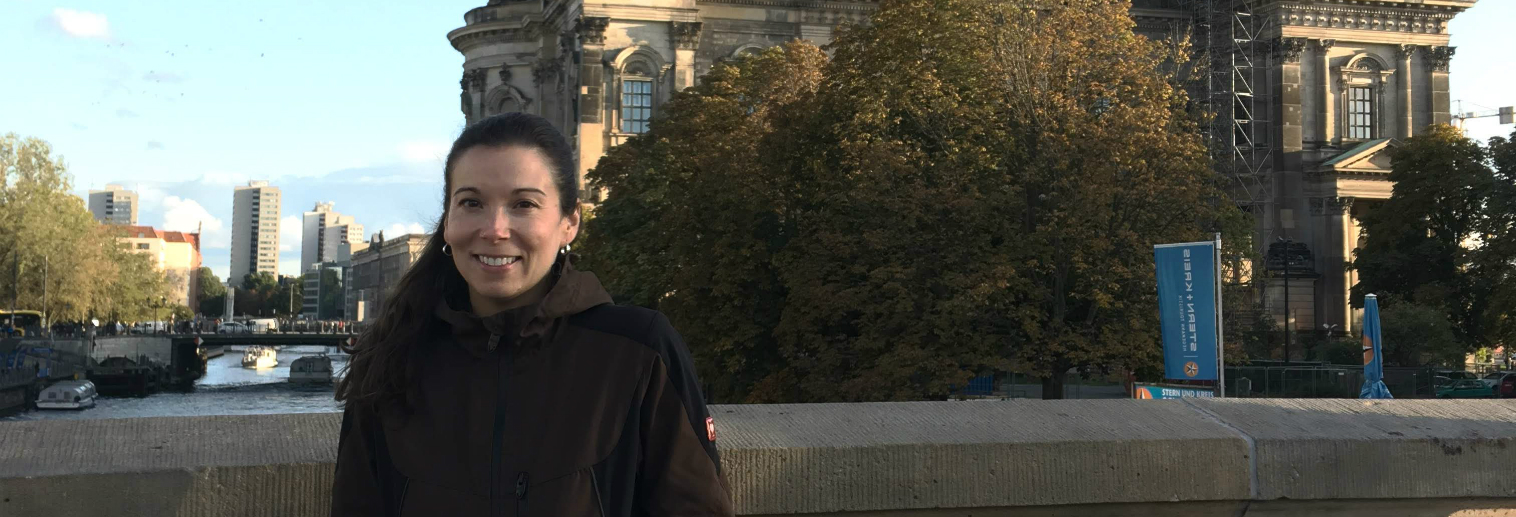 A self-described history geek, Jennifer Carrier Dorman '98 takes in the Berlin Cathedral.
A self-described history geek, Jennifer Carrier Dorman '98 takes in the Berlin Cathedral.
Jennifer Carrier Dorman '98
Berlin, Germany
A love of language, education, and Germany led Dorman to Berlin, where history and modern innovation meet to make life always interesting.
With a degree in history and social studies education, Jennifer Carrier Dorman ’98 spent several years working in education, mostly in Bucks County, Pennsylvania. She taught high school social studies, created and implemented development programs for teachers, and designed e-learning courses at Wilkes University. In 2010, she and her husband, also an educator, moved to southern Germany, where she taught at Montessori schools. “I fell in love with Germany 20 years ago when my husband and I celebrated our honeymoon in the Alps,” says Dorman. “After that, we would travel back to Germany and Austria almost every year to go hiking. A serendipitous encounter in one of the Alpine huts in the Karwendel section of the Alps is what led to our move. We befriended a Montessori educator, and when we later visited her at her school in Bad Tölz, we were offered teaching positions.”
“There is a palpable feeling of acceptance and community that I’ve not experienced in any other place I’ve ever lived.”
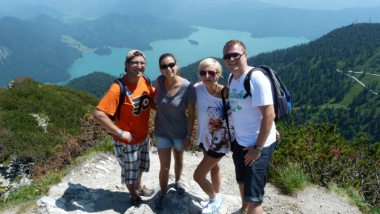
With husband and friends, Dorman visits Jochberg, Austria,
in the foothills of the Alps.
Living in Europe deepened Dorman’s interest in language, and in 2016, she decided to pursue a master’s degree in empirical and theoretical linguistics at the University of Wroclaw in Poland. After graduating, Dorman took a position with Babbel, creator of the language learning app, in Berlin, where she and her husband live today.
An instructional designer at Babbel, Dorman collaborates with a team of more than 700 linguists, data scientists, designers, and engineers in creating a digital language-learning experience for consumers. “As someone who is fascinated by languages, I’m inspired by the chance to work with colleagues from over 50 different countries who speak nearly as many different languages,” says Dorman. “In a typical day, I speak English in a design workshop, chat in German over coffee, practice my Polish at lunch, and pepper my casual conversations with French and Spanish.”
Dorman is equally enthusiastic about the city she now calls home. “For a history geek like me, it doesn’t get much better than Berlin,” she says. Dorman lives in the northern part of the city, a minute’s walk from where the Berlin Wall stood until 1989, and works around the corner from Alexanderplatz, a 20-minute walk from the Brandenburg Gate. Her daily commute takes her through Bornholmer Straße (one of the border crossings between East and West Germany) and Potsdamer Platz. “I love that this rich history and tradition coexist with the creative energy and innovation of Berlin’s startup sector,” says Dorman.
“Berlin is truly an international city,” she adds. “On the short walk from the U-Bahn station to my office, I’m likely to hear conversations in four or five different languages. Though with so many people from all over the world coming to Berlin, English is the de facto lingua franca.”
How has living in Berlin shaped Dorman’s thinking and perspective? “I feel that I’ve broadened my worldview considerably since moving here, just by virtue of the people I’ve been fortunate enough to come in contact with,” she says. “There is a palpable feeling of acceptance and community that I’ve not experienced in any other place I’ve ever lived. The current of creativity and innovation that powers this city is constantly recharged by the diversity of thought, experience, perspective, and language of its populace. There is a sense of unlimited possibility in Berlin.”
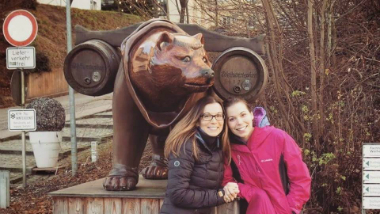
Dorman with her sister at the Weihenstephan Monastery Brewery in Freising.
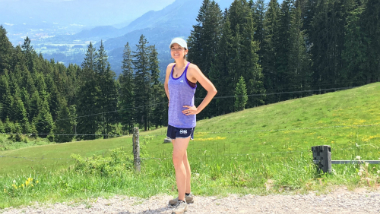
Hiking outside Zwieselberg in southern Bavaria
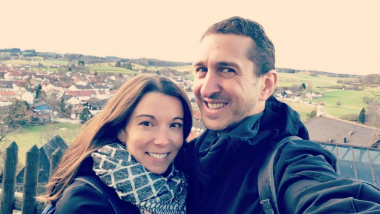
Dorman with her husband at the Andechs Cloister in Bavaria
